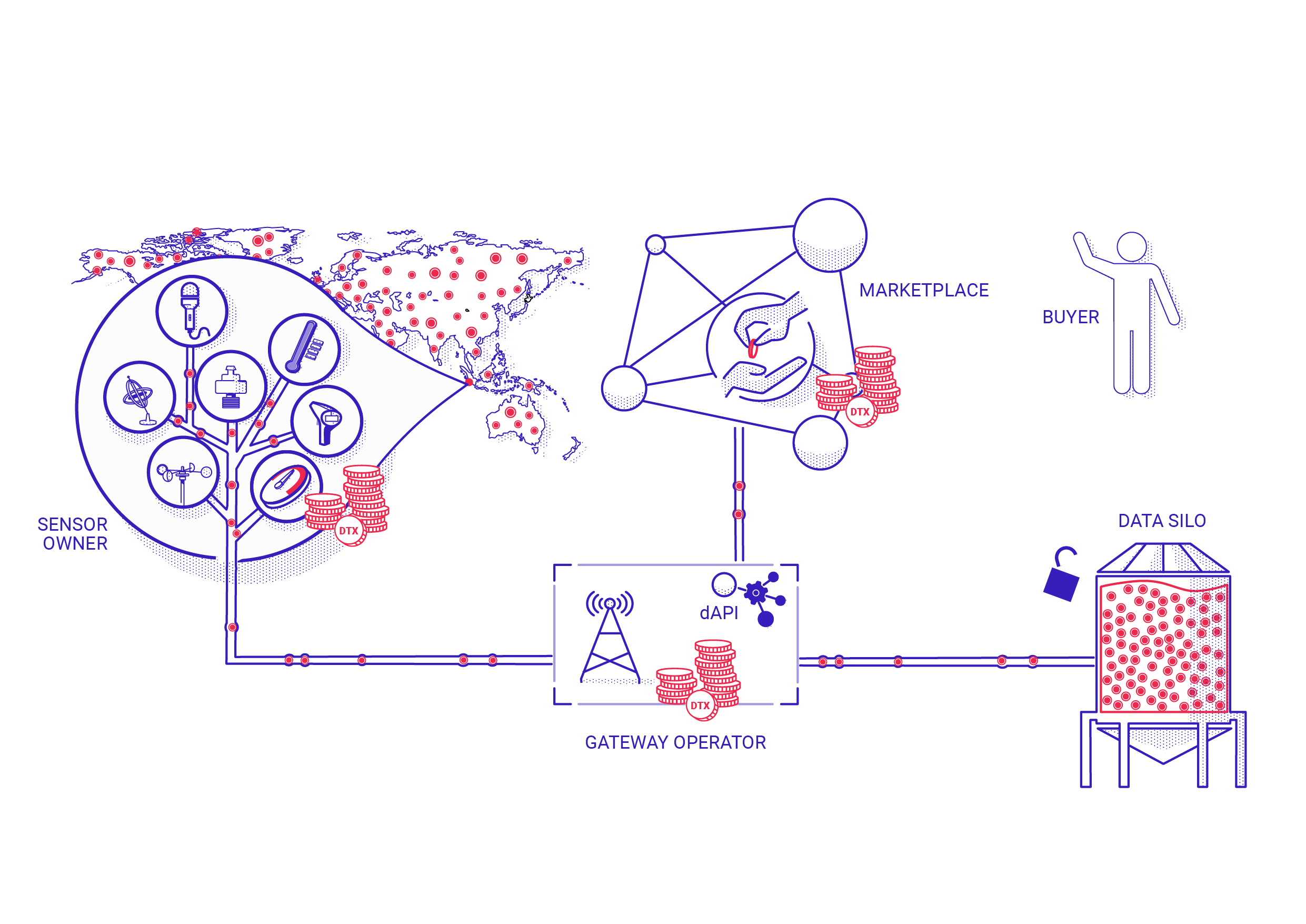DataBrokerDAO Unleashes The Potential Of IoT Sensor Data
The internet of things (IoT) is normally thought of as adding internet connectivity and communication abilities to everyday objects like a refrigerator. In reality, this is only a small part of the equation.
The IoT field is already highly developed and deployed in large-scale sectors like agriculture. Monsanto has an entire branch, Climate FieldView, devoted to sensors that are located in farms. These sensors collect data on weather, fertilizer rates, moisture levels, and even growth rates.
This data is used to create layers of visual information that allow farmers to create farm yield analysis, compare year to year performance, and even measure the health of different fields. This information is then used to develop scripts and automated procedures for seed rate, fertilizer, and pesticide application.
With the proper analysis, each farmer's data can be used to increase productivity, cost efficiency, and reduce waste.
What's The Problem?
The current problem is that the data collected by each farmer is only being used by that farmer and is basically in a walled-off data silo. If a farmer could analyze their data in conjunction with data from other similar farms they could all work together to address problems before they spread.
DataBrokerDAO Has A Solution
DataBrokerDAO is a blockchain based platform that will allow users to buy and sell sensor data over a decentralized network. This will allow unused and underused data to be monetized and can help sensor owners recoup some of the costs of the sensors.
In the present, a farmer purchases a soil sensor and pays a fee to send that data to Climate FieldView for their analysis service. In return, the farmer increases profit from their crops.
In the DataBrokerDAO ecosystem the farmer still purchases sensors and subscribes to Climate FieldView but they also sell their data over the exchange to others.
Who Would Buy Sensor Data?
In keeping with the farm example, a neighboring farmer that cannot justify the upfront costs of purchasing sensors may find it cheaper to purchase data and have it analyzed.
Third party analysis firms would also purchase data to develop their own services that they would then offer to farmers. A third-party service analyzing multiple farms could possibly license their analysis back to Climate FieldView.
Researchers and academics would find access to sensor data very valuable and could purchase it through grant and sponsorship money. This could help bypass the many years and steps of preparation and negotiations that researchers often go through to set up data collection systems.
Sectors including smart cities, transportation, manufacturing, insurance, weather, and even banking would all find sensor data valuable.
How Does The System Work?

The DataBrokerDAO ecosystem has four main stakeholders. Understanding the process is easiest by examining the stakeholders individually.
Sensor Owners
These are the foundational members of the network. Sensor owners provide the data that their IoT devices have collected for sale over the DataBrokerDAO marketplace. In return for the sale of their data, they receive DTX tokens.
Data Buyers
These are buyers of raw sensor data. These buyers may use the data for research, to package and sell through other means or even to train AI neural networks.
Data Processors
Data processors are a sub-group of data buyers. These buyers purchase data to analyze and enrich. The processors then sell the improved data via the DataBrokerDAO platform to end users.
Gateway Operators
Gateway operators provide the means of data transfer between sensor owners and buyers. The plan is to utilize large telecommunication companies who are already operating data gateways for internet traffic.
Each gateway will operate their own Ethereum mainnet blockchain node and run the open-source DataBrokerDAO dAPI on top. In return for this service, the gateway providers will be rewarded 10% of the DTX from each transaction.
What Does The Token Do?
The native token of DataBrokerDao is DTX. The DTX token has two main utilities, an internal currency and a token curated registry for reputation, quality and curation.
As the creator of the /r/curationmarkets, I have a high interest in token curated registries and find the staking mechanism of DatabrokerDao to be a very unique use case.
When a sensor owner offers data for sell they must stake (lock) some DTX to their offer. The amount of tokens they stake shows how confident they are in their data feed and also helps to make it more visible on the platform.
Buyers will utilize token staking to mark a seller offering low quality or bad data. This negative stake will be displayed as a mark on the seller's reputation to other buyers. If a seller receives too many negative stakes a DatabrokerDao administrator will review the data stream.
If the data is found to be solid and useful by the reviewer the seller wins the DTX tokens that were staked by all buyers. If the buyers win the review the sellers staked DTX tokens will be split among the challengers.
For More Information on DataBrokerDao
📅Token Sale Dates: Open until May 26
📈Token Ticker: DTX
Website || Whitepaper || ANN Thread || Telegram || Bounty
Keep Tabs On Me
Daily articles about cryptocurrency and blockchain based projects.
Steemit || Twitter || BitcoinTalk Profile


